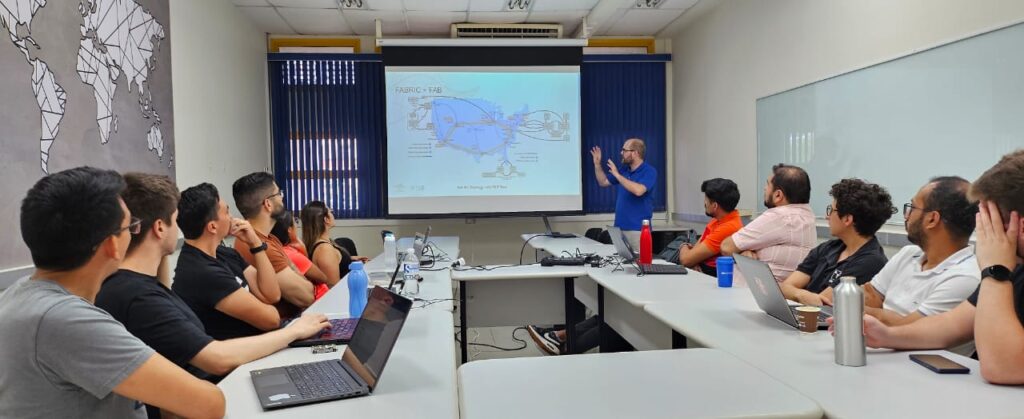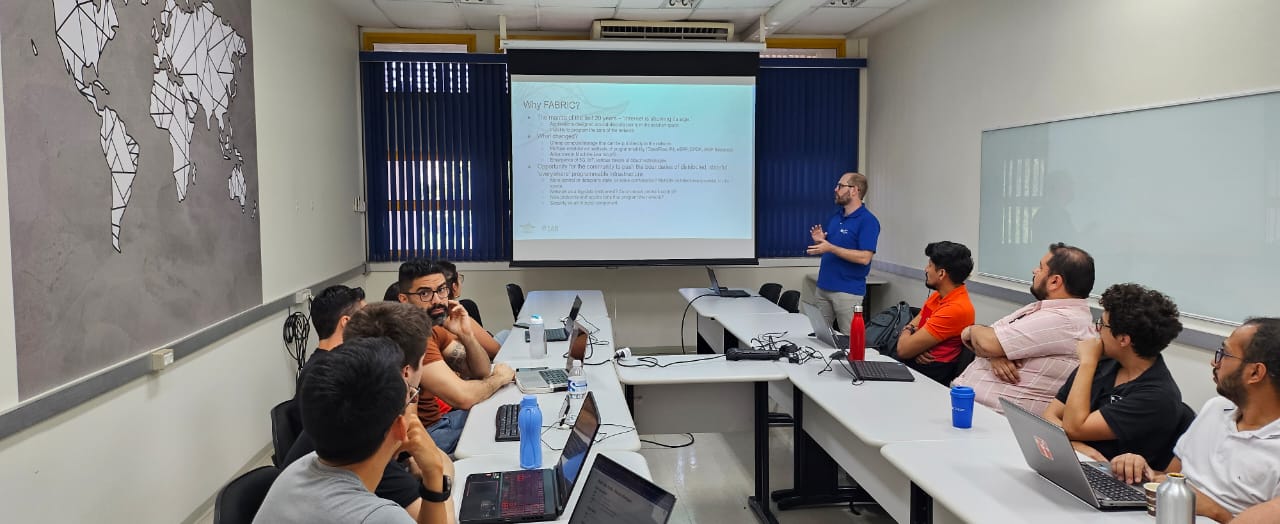In the last two decades, the internet has shown its limitations specially for the inability to program the network core. However, recent advances including affordable compute/storage in networks, various programmability methods, the emergence of ML/AI, and technologies like 5G and IoT, present new opportunities.
In this context, FABRIC is an international research infrastructure funded by the NSF enabling advanced experiments in networking, cybersecurity, distributed computing, storage, virtual reality, 5G, machine learning, and science applications. It is equipped with substantial computing power and storage, interconnected by high-speed optical links.
In order to understand in a preliminary way what FABRIC’s scientific laboratory is capable of, last Monday, October 23, several PhD and MSc students of the Faculty of Electrical Engineering and Computer Science (FEEC) and the Institute of Computer Science (IC) at the UNICAMP, participated in the “Hello FABRIC” Tutorial, delivered by Marcos Schwarz from RNP Brazil in the LCA lab at FEEC/UNICAMP.
In this tutorial, a tour of the portal and the knowledge base of the FABRIC tool was explained at the beginning, as well as an introduction to Jypyter/FABlib. Also, it was shown how to access the Jupyter Hub and how to set up the test environment along with the SSH configuration keys. As a first example, an end-to-end test was performed in the trivial experiment “Hello FABRIC”. Subsequently, the differences between creating a FABnet IPv4 network in automatic configuration versus a manual configuration were reviewed. To conclude with the creation of a local Ethernet (layer 2) network in automatic configuration. Each exercise was accompanied by a notebook with a step-by-step description of how to perform the exercise, from importing the libraries, creating the slice experiment, running the experiment and finishing the slice.
Training networking researchers in state-of-the-art technologies such as those provided by the FABRIC facilities is part of the education and cutting-edge research mission of SMARTNESS.








